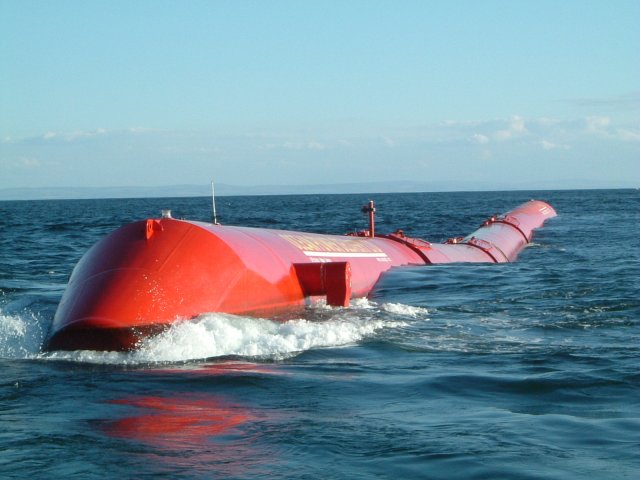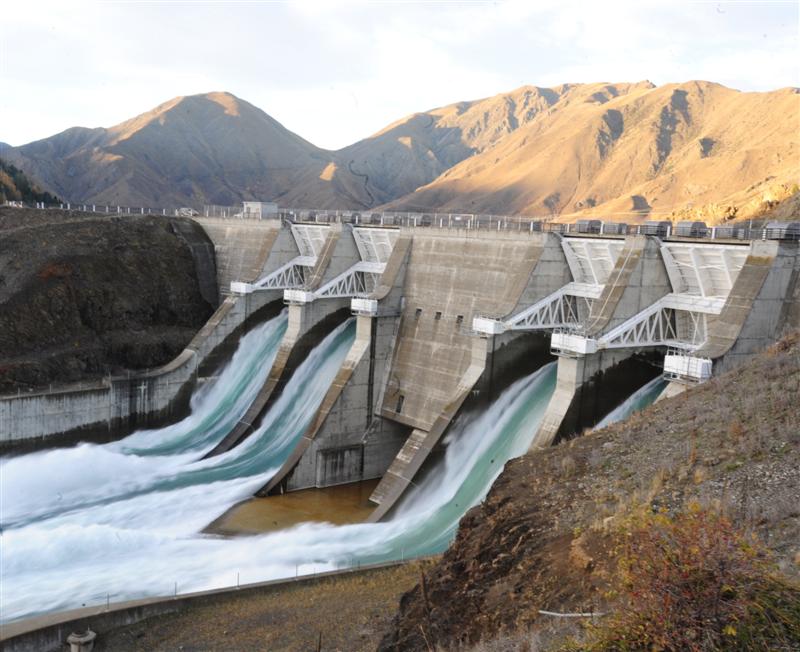Sunday, 19 May 2013
Water Issues in Bangladesh By Nathan Smith and Ethan Daniels
The Hamilton Jet By Scott Hawkins
The Jet unit Is one of the most awesome inventions ever
made, it involves powerful motors and high speed propellers to make it go. How
a jet boat works is the motor spins a propeller insider a cylinder that sucks
water in from the bottom of the boat and propels it out the back end through a
nozzle that can turn side to side to steer different direction. The Hamilton Jet
was invented in New Zealand By Sir William Hamilton. A waterjet generates propulsive
thrust from the reaction created when water is forced backwards. It works just
as the law, “every action has an equal and opposite reaction" says. A good
example of this is the recoil on your shoulder when firing a rifle.
Here is a video involving Jet units:
Without water Jet boats couldn’t be used and a whole lot of
fun would be missed out on from everyone.
Some of the main recreational uses of a jet boat are;
. Wakeboarding
. Skiing
. Slalom Skiing
. Knee boarding
. Fishing
. and just going for a spin!!!
Shallow Water Blackout By Jackson Heneveld and Josh Hardy
Shallow
water blackout occurs when the O2 levels in the body drop too low and the CO2
levels too high. This causes the body to fall into unconsciousness because of
the urgent need to breathe. When the person is unconscious, they will
automatically breathe in thus causing the subject to drown.
This
promotes serious risks to the person’s health and wellbeing while participating
in these “breathe holding” games as serious harm could be caused to the person.
The signs of a shallow water blackout are not indicative of an upcoming
blackout. In fact there are no physical symptoms of an incurring loss of
consciousness. It could even occur when the individual does not feel the need
to breathe. The medical definition of “shallow water” defines any water above
the depth of 5 metres.
The
discussion around shallow water blackout has come into the spotlight recently.
After deaths involving children without supervision have been recorded in
England and Australia.
The sudden
urge to breath in which happens when the person in context is performing
“Apnea”(breath holding) has built up too much carbon dioxide in their
bloodstream over taking the oxygen level thus needed to be released as a waste.
http://en.wikipedia.org/wiki/Shallow_water_blackout
Water Issues By Nathan Smith
97%
of the people of Bangladesh have access to water, but only 40% per cent have
proper sanitation. With a staggering 60% of the population that has to endure
unsafe drinking water, the nation is in real danger. The availability of this
water greatly fluctuates throughout the year as the warmer season brings
massive amounts of water in frequent monsoons and the cooler season brings
drought. The infrastructure cannot adequately deal with the barrage of water in
monsoon season so the water is not saved for the drier months. Of the water
that is available, well over 80 per cent of the water is used for agriculture.
Links:
Tidal Power By Lachlan Crawford
There are many
different types of Tidal Energy. The tidal dam is the most common one. It traps
water in a holding pen twice a day when the tide comes up and then slowly lets
it out until the tide comes up again, creating power. They are usually built in
areas where there is quite a lot of difference between low and high tide, so
usually in an estuary of some type of reservoir. The problem with this is that
it cannot capture very large amounts of water, so not a whole lot of
electricity is created and it can cost a lot of money and damage the
environment. However, there are a few more experimental ways.
The second way is to harness the underwater currents with
the turbine above. These are experimental turbines in County Down, Northern
Ireland. Each one generates 22.53 megawatt hours of electricity every day. They work by the tides moving the rotors. As
the rotor pole is movable, it would be able to move to the right position to
create the most energy as possible. I recon these are a very economical idea.
The final one I’m going to look at is the UK’ first wave-power plant, called the
Sea Snakes. These things are 142m long, have a diameter of 3.5m and are made
from 700 tonnes of carbon steel. But how does this mammoth machine work? It is
made in four articulate sections, meaning they freely move around. At each
joint there is a wave converter. A hydraulic ram is moved in and out by the
wave moving the joints, and the wave converter turns this into energy. At peak output they can produce 750KW of
power each and they are usually in groups of about two or three. At the moment
they are only in use around Briton as this technology is relatively new.
Thursday, 16 May 2013
The Water Cycle By Bryce Taylor
As you should know by now, water falls from the sky
as rain, this rain accumulates as things such as puddles and rivers but copious
quantities of it can cause flooding.
Also I’m assuming that you have taken notice of that
big, bright, fiery thing in the sky called the Sun? If not look out your window
(we do not advise or recommend that you
look at the sun). The Sun’s rays (of light and heat) Heat up water until
it’s particles spread apart and become a gas, this is called evaporating the
gas (water Vapour) rises into the air where it accumulates again but as clouds,
yes those big white or grey fluffy things in the sky aren’t sheep they are
large amounts of water vapour that are blown about in the sky by wind, when a
cloud begins to gather too much vapour it becomes dense and visibly grey, the
vapour in these grey clouds bunches together until it returns to its liquid form
(water) that then falls to earth due to gravity where it accumulates as puddles
and rivers and repeats the process over and over, but some clouds release their
water droplets on mountains where most of it hardens even more and forms
ice/snow that eventually melts and runs down the mountains to create rivers
that gain water that evaporates and the process repeats, if you’re confused as
of what this means read this over and over until you get it, or ask someone who
cares.
The Water Buggy By Max Chaiteerasuwet, Ben Scott and Angus Halligan
The Water-Buggy is mainly a water machine with
beautiful looks and an energy efficient motor(s), powered by a wind turbine.
The engines are smaller jet engines with a hatch to block out water when you’re
under water (submarine mode) feature, as the wind powered turbines power you
along your solar panels on the back of your buggy store energy. The stored
energy powers your car when you are under water. Inside the car there are
enough seats for 6 people, a medical supply kit; an air supply tank so you can
breathe fresh air if it’s bad weather conditions outside or such, there is also
a storage compartment at the front of the car (boot) and a nice vinyl interior.
The main concern is for the people who make: Aeroplanes, boats (all things that
help you get over water), well our company has given all these people jobs at
our new production plant. People may still use other forms of transport if they
want to but they have a choice of transport if they want to, we mean who is going
to stop someone buying form us E.G. say if someone was to buy a lollipop they
could choose what flavour and company. $159,999 is our company’s starting price
for our fabulous product. Why so costly? Because the future is here and if you
think about it this vehicle could potentially save you lots of money, because
you’d save on plane tickets, boat tickets and for those who buy boats you’d
save on buying the boats (and fuel for some types of boat).
Human Consumption By Jonny Mackay
Hydroelectric
power in New Zealand has been a part of the country’s energy system
for over 100 years and continues to provide more than half of the country’s
electricity needs.
The first
industrial hydro-electric power plant was established at Bullendale in Otago in
1885, to provide power for a 20 stamp battery at the Phoenix mine.
The first hydro-electric power station
constructed by the government was the Okere Falls hydro-electric station near Rotorua. The plant
began operating in May 1901. Electricity was transmitted at 3300 volts over a
13-mile (21 km) route to Rotorua, and was used to drive sewage pumps, and
some public buildings including five thermal baths.
There has been opposition to hydroelectric power on environmental
grounds for many decades.
The
first nationwide environmental campaign in New Zealand was opposition to
raising Lake Manapouri for a power station to supply electricity to an aluminium smelter. The Save Manapouri Campaign was a success and the power station was built without raising the level
of lake outside of its natural range.
The
highly endangered Black Stilt, which nests on the braided rivers beds of the South Island, is threatened by changes in river flows as a
result of new hydro dams and changes in flow regimes for existing dams. The Upper Waitaki Power Development
posed a threat to the black stilt habitat and a programme was set up to lessen
the threats.
Hydro is
New Zealand’s highest electricity producer with over 50% of New Zealand’s
annual electricity production.
Interesting Facts and Uses of Water By Scott Hamilton
Do you know drinking too much water too quickly can lead
to water intoxication just like alcohol Water intoxication occurs when water
dilutes the sodium level in the bloodstream and causes an imbalance of water in
the brain? Water intoxication is most likely to occur during periods of intense
training. While you should be having eight cups of water a day, not all of this
water needs to be in the liquid form. Almost all food and drink provides some
water to the body.
Soft drinks, coffee, and tea, while made up
almost entirely of water, also contain caffeine. Caffeine can prevent water from
traveling to necessary locations in the body just like old age.
Pure water (solely hydrogen and oxygen
atoms) has a neutral PH of 7, which is neither acidic nor basic its neutral.
Water dissolves more substances than any
other liquid. Wherever it travels, water carries chemicals, minerals, and
nutrients with it. Much more fresh water is stored under the ground in aquifers
than on the earth ‘surface.
The same water that existed on the earth
millions of years ago is still present today true stuff. The total amount of
water on the earth is about 326 million cubic miles of water.
Of all the water on the earth, humans can
use only 0.3 percent of this waterman that sucks. This water is found in
groundwater aquifers, rivers, and freshwater lakes.
The United States uses about 346,000
million gallons of fresh water every day. The United States uses nearly 80
percent of its water for irrigation and thermoelectric power, farmers hog all
the water.
Approximately 85 percent of U.S. Citizens
get their water from public water facilities. The other 15 percent supply their
own water from private wells or other sources surprising its only 15 percent.
By the time a person feels thirsty; their
body has only lost over 1 percent of their water in their body not much ae.
The weight a person loses directly after
intense physical activity is weight from water, not fat that’s pretty gutting.
1. Hot Water Freezes Faster Than Cold
Water
Take two pails of water; fill one with hot water and the
other one with cold water, and put them in the freezer. The hot one would be
frozen before the cold one. But wait wouldn't the hot water have to cool down to
the temperature of the cold water before it reaches freezing temperature, where
the cold one doesn’t have to cool down before
freezing?
In 1963, a Tanzanian high-school student named was
freezing hot ice cream mix in a cooking class when he noticed that a hot mix
actually froze faster than a cold mix. When he asked his teacher about this, his
teacher laughed at him. Thankfully, he didn't back down - he convinced a physics
professor to conduct an experiment which eventually confirmed it in certain
conditions, hot water freezes before cold water trippy as .no one exactly how
it’s done.
But some people think hot water freezes first it forms
ice at a higher temperature than cold water, where cold water freezes faster it
takes less time to reach the super cooled state then it forms ice)
http://www.neatorama.com/2008/08/22/5-really-weird-things-about-water/
Snow Skiing By Jack Ludemann
Now you
maybe think what does snow skiing have to do with water. Snow is the freezing
water into ice crystals and falling as snow, a light white flakes/powder
covering the ground in layers. Snow skiing is a big part in New Zealand. In the
off season the summer water activities take a back seat such as water skiing,
biscuiting, wakeboarding etc. Snow skiing/snowboarding is on everyone’s mind.
New Zealand has 15 public ski fields and snow parks. The 2013 season starts in
June (the earliest opening is on the 6th Coronet Peak). My favourite
mountain to ski on is Cardrona ski field.
Water parks in New Zealand
and Australia
If you ever happen
to be in New Zealand or Australia and have a sudden craving to visit a water
park have a look at the list below for water parks in your nearby area:
Australian Capital
Territory:
New South Wales
·
Wet’n’Wild,
Sydney (http://www.wetnwildsydney.com.au/)
South Australia
Queensland
·
Wetside
Water Park, Hervey Bay (http://www.widebaywater.qld.gov.au/quicklinks/wetsidewatereducationpark)
Western Australia
New Zealand
Maori Water Rights By Bryce Taylor
In 2011, the governments’ plan to sell New Zealand
assets caught the attention of many Maori in the country, who attempted to
‘reclaim’ the rights to the New Zealand Foreshore and Seabed and prevent the
government from selling shares of hydroelectric dams and wind farms that
Maoris’ claim to own, that they were apparently given rights to the treaty of
Waitangi on the 6 of February 1840 and due to a misleading translation in the
document the water rights issue is an on-going argument between the government
and Maori although it was resolved in an appropriate matter and the Maori
council were denied rights to the foreshore and seabed in New Zealand, the
asset sales were postponed due to the supreme court’s decision.
Links:
http://tvnz.co.nz/national-news/maori-take-water-rights-debate-waitangi-5333794
Links for pictures:
http://www.1000flags.co.uk/new-zealand---maori-tino-rangatiratanga-flag-787-p.asp http://www.northernadvocate.co.nz/news/harawira-id-lead-maori-mana-party/1724449/
Water Technologies By Scott Hawkins
Recreational uses: Water is used very commonly over summer months for recreational used and just as commonly over winter months. Over summer it is used widely for boating and other water sports including wakeboarding, skiing, Knee boarding and many others. Over the winter months water is used a lot too! The only difference is it is used in a solid form instead of a liquid, in other words it is frozen. When lakes are frozen over they are ice skating rinks, when rain freezes into snow it is skied and snowboarded on.
Power harnessing through hydro: With the modern technologies these days there
are many ways that hydro is turned into power but one of the main ways is
through dams. The water is built up behind a big wall and is slowly let
through, running turbines as it goes past, creating power!! Although this
method of power producing is some of the most commonly used, it is one of the
more difficult and expensive to manufacture and make in the first place.
http://www.criffelpeakview.co.nz/wp-content/uploads/2013/03/Cardrona-ski-resort-8-wanaka-940x561.jpg
http://visual.merriam-webster.com/images/transport-machinery/road-transport/radiator.jpghttp://outdoorspeakerstore.com/images/X/wakeboarder.jpg
http://www.odt.co.nz/files/story/2009/07/benmore_dam_photo_by_craig_baxter__7975866934.JPG
Subscribe to:
Comments (Atom)





























